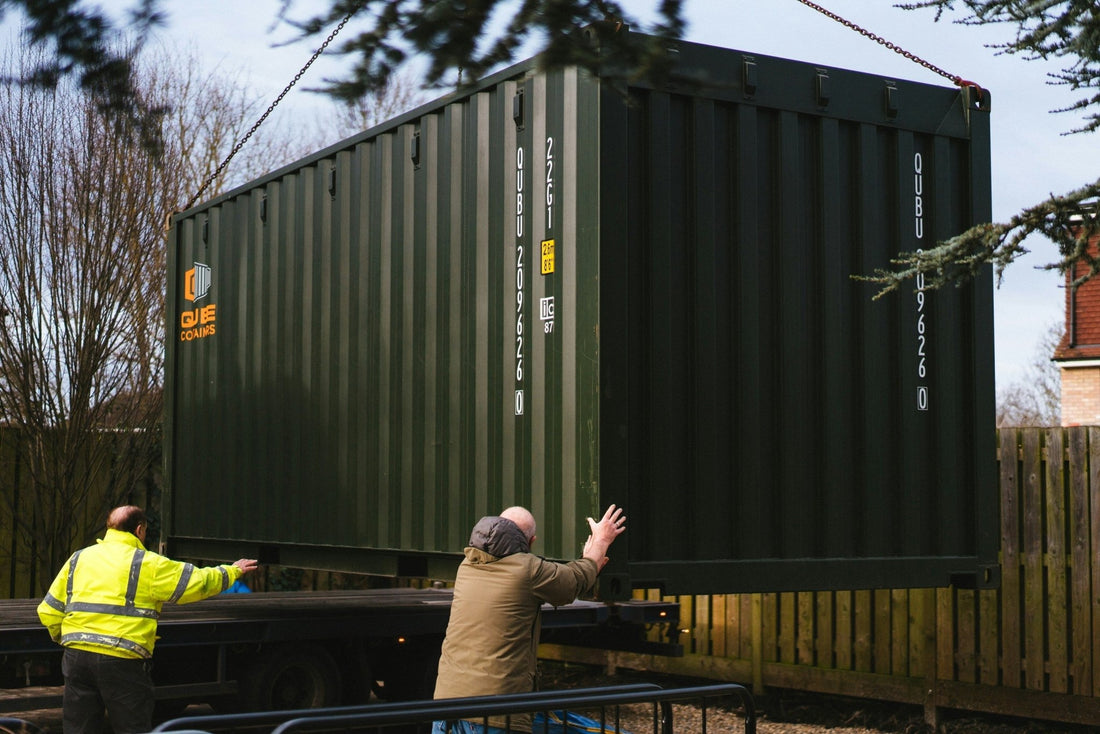
How to Renovate a Shipping Container Into a Stylish, Functional Space
Share
Whether you’re turning a shipping container into a cozy backyard office, a minimalist tiny home, or a pop-up retail shop, container conversions are a solid alternative to traditional construction. Let’s walk through the steps, materials, and strategies that make for a successful container renovation, from purchase to polish.
Choosing the Right Shipping Container for Your Project
Most people go for a 20-foot or 40-foot container, depending on their available space and layout needs. If you’re going tiny, a 20-footer might be enough. Larger builds or those with multiple rooms will need more square footage.
Stick with new (one-trip) containers if your budget allows — they’ll be in like new condition. Used containers will still be in good condition, but you’re likely to spend more time (and money) sanding off corrosion, replacing floor boards, and dealing with holes if they develop.
Planning the Layout
Start with your must-haves: Is this going to be a workspace? A guest house? A yoga studio? Once you know what function your container will serve, sketch out a layout that makes sense for your daily flow.
Use software like SketchUp or Floorplanner to test different configurations before you start cutting into the shipping container.
Cutting and Reinforcement
This is where things get real. Making openings for doors, windows, or HVAC units isn’t as simple as grabbing a Sawzall and jumping right in. Every cut affects the structural integrity of the container, so reinforcements are a must.
You’ll need to weld in steel tubing or angle iron around any large openings to keep the container structurally sound. If welding isn’t in your skillset, bring in a pro.
Insulation and Weatherproofing
Proper insulation is non-negotiable if you plan to use your container year-round.
Spray foam insulation is a top choice because it creates a moisture barrier while sealing tight against the corrugated walls. Rigid foam is another solid option, though it requires more prep and may eat into your interior space. Avoid fiberglass batts unless you want to deal with condensation and potential mold.
Once insulated, add a vapor barrier and seal up seams, especially around doors and windows. If you're in an area that gets a lot of rain or snow, consider adding a roof overhang or sloped top to help water run off instead of pooling.
Flooring
Many renovators either replace the plywood floor entirely or seal it with epoxy before adding a new surface.
Popular options include:
-
Luxury vinyl plank (LVP): Durable, waterproof, and low-profile.
-
Plywood with sealant: A budget-friendly base for rugs or throw carpets.
-
Polished concrete overlays: Industrial chic, though heavier and more labor-intensive.
Walls and Ceilings
For walls and ceilings, lightweight materials like plywood, shiplap, or drywall over furring strips work well. If you want to keep that industrial edge, you can leave some of the original steel exposed for a raw, modern look — just be sure it’s clean, sealed, and rust-free.
Electrical and Plumbing
Running utilities through a metal shell adds a layer of complexity. Wires and pipes can’t just be stapled to the wall like in a traditional home — they need to be routed through conduit and anchored securely. Electrical panels, outlets, and lighting should meet local codes, and if you're adding plumbing, plan for waste drainage and water lines well in advance.
Many container renovators install:
-
Mini split HVAC systems for climate control
-
Recessed LED lighting to save headroom
-
Compost or incinerating toilets if traditional plumbing isn’t feasible
Always pull permits where required and hire licensed professionals for anything that involves wiring, water, or gas.
Exterior Finishes and Curb Appeal
A coat of marine-grade, direct-to-metal paint does more than boost curb appeal; it protects the metal from rust and weather.
You can also dress things up with:
-
Wood cladding or slats for a Scandinavian vibe
-
Green roofs or living walls for eco flair
-
Decking or patios to extend your footprint
Add windows with trim, exterior lights, and even planter boxes to soften the look and make it feel less like a shipping container and more like a boutique cabin.
Final Touches
This is where your personality shines through. Smart storage, multi-use furniture, and thoughtful lighting can elevate the space and make even a small shipping container feel stylish and functional. Consider fold-down tables, lofted beds, or wall-mounted desks to make the most of every inch.
Smart tech like remote-controlled lighting, solar panels, or energy-efficient appliances can help make your container project sustainably on trend.
Renovating a shipping container is a chance to create a space that serves your needs and reflects your style. Whether you’re building an off-grid retreat or just carving out a quiet corner of your backyard, shipping container conversions are affordable, flexible, and sustainable.
Fill out the form below for a free shipping container quote from USA Containers:
